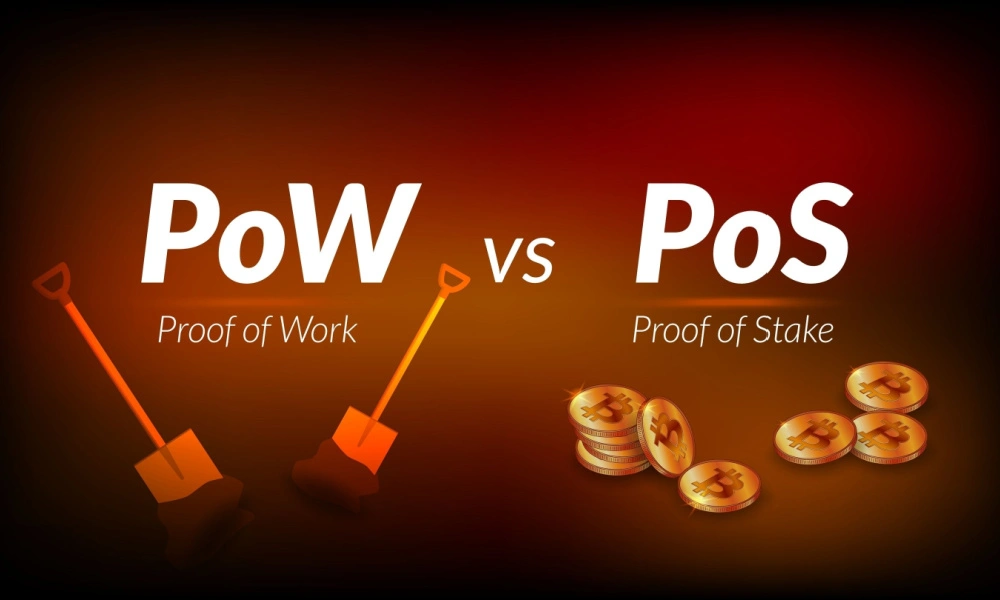Blockchain Decoded: Exploring Various Types of Consensus Mechanisms
Blockchain magic rests on one key idea: trust. It’s the silent engine behind every coin and contract. Wrapped in each digital handshake is a set of rules—a consensus mechanism—ensuring everyone plays fair. We’re peeling back the layers to reveal the cogs of this engine. Think of blockchain like a team sport, where types of consensus mechanisms in blockchain set the rules for how your team scores. Without these rules, chaos rules, and no game is won. From the power-hungry Proof of Work to the sleek Proof of Stake, we’ll dive into the guts of these systems. Ready to decode the DNA of blockchain? Strap in as we tour through the tech that keeps our crypto ticking.
Understanding Consensus Mechanisms in Blockchain Technology
Proof of Work Explained: Securing Networks Through Computing Power
Proof of Work (PoW) is a key part of Bitcoin. Think of PoW as a big competition. In it, miners use computers to solve tough math puzzles. The first one to solve a puzzle gets to add a new block of transactions to the blockchain. This block has a record of who sent bitcoins to whom.
PoW makes sure everyone agrees on the transaction history. It prevents cheating because changing past transactions is super hard. Miners need to redo all the work for the changed block and all blocks after it. This too much work because the math puzzles are really tough.
PoW uses a lot of energy. Miners need powerful computers that take up a lot of electricity. This makes some people worry about its impact on the planet. Bitcoin miners are always looking for cheap power, which sometimes leads them to green sources. But not always. This makes the debate on PoW’s energy use very heated.
Proof of Stake: A Comparison of Efficiency and Stakeholder Incentives
Now let’s talk about Proof of Stake (PoS). PoS is a newer way that some blockchain networks use. In PoS, you don’t mine with computer power. Instead, you “stake” some of your coins. Staking means you lock up your coins as a way to be part of creating new blocks.
In PoS, the system picks the creator of the new block based on how many coins they stake and for how long. Usually, the more coins you stake, the better your odds of being chosen. This is like a lottery where every coin is a lottery ticket.
The person chosen checks the new transactions and adds them to the blockchain. They don’t need big, power-hungry computers like in PoW. This makes PoS more eco-friendly. It saves a lot of energy.
Staking also gives coin holders a chance to earn more coins, kind of like earning interest in a bank. This encourages people to hold onto their coins, which can help make the price more stable.
Comparing PoS to PoW, PoS is like having a savings account where you earn interest (staking rewards) and help keep the bank’s ledger (blockchain) accurate. PoW is like being part of a big race where you solve puzzles (mining) for a chance to win a prize (new coins).
In the end, PoW and PoS are two ways that blockchains stay secure and honest. PoW has been around longer, but PoS is gaining fans because it’s less hard on the environment and still keeps the network safe. Developers and crypto fans are always debating PoS vs. PoW, trying to figure out which is better. Depending on who you ask, the answer may be different, but both are super important to how blockchains work today.
(Blockchain validation methods, mining difficulty and consensus, node validators role in blockchain, ecological impact of consensus mechanisms, staking in distributed networks, scalability and consensus models – these are all cool things we talked about here, tied to PoW and PoS. They’re the nuts and bolts that make blockchains tick.)
Advanced Consensus: Beyond PoW and PoS
Delegated Proof of Stake and Its Benefits for Scalability
Delegated Proof of Stake (DPoS) speeds up transactions and boosts performance. It does so by letting users vote for a few trusted nodes to validate and quickly process transactions, called delegates. It’s like board elections, but for blockchain security. This select group of nodes works faster than the large network in proof of work (PoW) systems. They validate blocks and secure the network. This system offers democracy, where your coin amount is your vote.
For users, DPoS can mean lower fees and faster transactions. It creates a more energy-efficient system than you find in PoW models, like Bitcoin. Plus, as networks grow, DPoS can scale up with fewer growing pains. This makes it a liked choice for newer blockchains eyeing rapid expansion.
The Function of Nakamoto Consensus and Byzantine Fault Tolerance
With Nakamoto Consensus, introduced by Bitcoin, we get a simple idea that’s quite smart. Nodes big, called miners, solve tough puzzles using much computing power. The first to solve it wins the right to add a block to the blockchain. It’s a race, but also a defense against attackers since they’d need heaps of power to control the system.
Byzantine Fault Tolerance (BFT) tackles tricky problems in trust. In blockchain terms, it ensures every part of a system agrees, even with bad actors present. BFT does this by using a majority rule, where if most nodes are honest, the system hums along fine. This comes in handy, stopping faulty nodes from wrecking chaos inside the network.
Both Nakamoto Consensus and BFT aim to keep our blockchains secure and honest, so we can trust our digital deeds and deals are locked in safe, no funny business. They stand guard, ensuring the rules are followed and every transaction tallies up.
In this rapidly shifting tech world, keeping up with consensus mechanisms like DPoS, Nakamoto Consensus, and BFT is key. They’re not just tech talk; they’re the invisible forces that keep our cyber cash and smart contracts solid. So, wherever this blockchain journey heads, you can bet these consensus champs will be leading the way, keeping us safe, swift, and scalable.
The Environmental and Technical Impacts of Consensus Methods
Ecological Implications of Different Consensus Mechanisms
Proof of Work? It’s a way blockchains like Bitcoin stay secure. But it needs lots of power. This has led many to discuss its ecological impact. With so much power used, Proof of Work can have big carbon footprints. Think of all those computers working non-stop.
Now, how about Proof of Stake as a comparison? It’s quite power-friendly! Instead of solving tough puzzles, folks lock up digital coins to secure the network. Fewer electricity bills and a happier planet. Yet, some worry it might make the rich richer. Because the more you stake, the more say you have.
Delegated Proof of Stake offers a middle ground. It uses less power and makes transactions quick. So, what’s the plus? It can scale up without needing a city’s worth of energy!
Understanding Ethereum 2.0 is key here. It’s moving from Proof of Work to Proof of Stake. A big leap for reducing the power bill and making things eco-friendly!
Hash Rate, Mining Difficulty, and Their Roles in Blockchain Security
Hash rate sounds complex, right? Think of it like the muscle of the blockchain. It’s the speed at which problems are solved. And it helps stop bad actors too. When the hash rate is high, it’s like having a strong guard at the door.
Mining difficulty? It’s how hard the puzzles are in Proof of Work. And it must keep changing. Why? To make sure people aren’t hacking the system. If mining gets too easy, a hacker could mess things up. But if it’s too hard, it’s a waste of power and time. This balance keeps things secure and the lights on!
In a nutshell, consensus methods like Proof of Work need a lot of juice. They’re crucial for security but can be rough on Mother Earth. As blockchain grows, we’re seeing new ways pop up to keep it safe and green. The real trick is finding a way that’s fast, secure, and nice to our planet.
The Future of Blockchain Consensus: Innovations and Upgrades
From Shard Chains to Federated Models: Exploring New Consensus Protocols
We keep moving forward in the blockchain world. New ideas pop up like popcorn! Shard chains are a hot topic. They break a big database into smaller pieces. This makes the whole system faster and easier to use.
Now, what about federated models? They’re like a private club. A group of trusted nodes makes decisions together. This can speed things up and keep things safe.
But let’s get real on proof of stake (PoS). Some say it’s the future, kicking proof of work (PoW) off the stage. PoS lets folks with more coins have a bigger say. This could mean less energy spent, which is awesome for Mother Earth.
Ethereum 2.0 and the Shift Towards a More Sustainable Blockchain Ecosystem
Ethereum is like a big ship turning towards better shores. Ethereum 2.0 is the captain steering towards proof of stake. The goal? Use less juice while keeping everything tight and right.
This upgrade is not small potatoes. It could change how we think of blockchain’s hunger for power. Ethereum 2.0 wants to make things less wasteful and more friendly for the world.
By chopping up the workload with shard chains, Ethereum 2.0 aims to get more done without burning so much fuel. It’s a smart move, and many eyes are watching. Could this be the move that shakes up the crypto game? We just have to wait and see.
In this post, we dived into how blockchains reach agreement, or consensus. We started with the basics of Proof of Work, where computer power keeps networks safe. Then, we compared it to Proof of Stake, seeing the perks for those who have a stake.
We didn’t stop there. We saw how Delegated Proof of Stake can make things faster for everyone and why Nakamoto Consensus and Byzantine Fault Tolerance are crucial for blockchain trust.
We also tackled tough topics like the impact of these methods on our planet and how they shape blockchain security. Think about the balance – keeping our digital world safe without harming our real world.
Lastly, we looked ahead, exploring cutting-edge ideas like Shard Chains and what Ethereum 2.0 means for a greener blockchain future.
So, we’ve covered a lot. Keeping blockchains secure can be heavy on resources, but smart minds are working on better ways. Staying informed lets us make wiser choices for tech and our planet. Let’s watch closely as blockchain stays a step ahead – safe and sound, without costing the earth.
Q&A :
What Are the Main Types of Consensus Mechanisms Used in Blockchain?
Consensus mechanisms are fundamental protocols that establish agreement on the state of the blockchain network. They ensure each new block in the blockchain is the one and only version of the truth agreed upon by all nodes in the network. The main types are:
- Proof of Work (PoW): This is the original consensus mechanism used by Bitcoin. It involves solving complex mathematical puzzles, which requires significant computational power.
- Proof of Stake (PoS): Unlike PoW, PoS chooses the creator of the new block based on their stake, or ownership, in the relevant cryptocurrency, reducing the energy consumption necessary for the process.
- Delegated Proof of Stake (DPoS): DPoS is a variation of PoS where stakeholders vote on representatives to validate the next block.
- Proof of Authority (PoA): In PoA, transactions and blocks are validated by approved accounts, known as validators. This is more centralized compared to other mechanisms, but can offer faster processing times.
How Do Consensus Mechanisms Affect the Security and Efficiency of a Blockchain?
Consensus mechanisms are essential to maintaining the integrity and reliability of a blockchain. They affect:
- Security: A robust consensus mechanism defends the network against fraudulent transactions and double spending. The complexity of PoW, for example, makes tampering with the chain incredibly resource-intensive and discourages attacks.
- Efficiency: The mechanism chosen can greatly impact blockchain efficiency. For example, PoS and DPoS require less energy consumption and can validate transactions faster than PoW, allowing for higher transaction throughput.
Can You Explain the Difference Between Proof of Work and Proof of Stake?
Yes. The primary differences include:
- Resource Dependence: Proof of Work relies heavily on computational power to solve complex puzzles, thus consuming substantial electricity resources. Proof of Stake, on the other hand, relies on the economic stake of participants for the validation of transactions.
- Selection Process: In PoW, the right to validate a block is competitive, based on solving the puzzle first. In PoS, the validator is chosen based on their stake and is often deterministic or randomized.
- Rewards: PoW typically rewards miners with new coins for validating a block. In PoS, the validator receives transaction fees instead, as new coins are not minted.
What Is the Environmental Impact of Different Consensus Mechanisms?
The environmental impact varies significantly across different consensus mechanisms:
- Proof of Work: It has come under criticism due to its high energy consumption, which can lead to a large carbon footprint depending on the source of electricity.
- Proof of Stake and its Variants: These are considered a greener alternative to PoW, as they require considerably less power consumption and therefore have a smaller environmental impact.
Are There Any New Consensus Mechanisms in Development for Blockchain Networks?
Yes, innovation in blockchain technology is ongoing, and several new consensus mechanisms are being researched and developed to address limitations of existing ones. These include:
- Proof of Elapsed Time (PoET): It’s designed to achieve consensus through a fair lottery system without high resource usage.
- Proof of Space (PoSpace) or Proof of Capacity (PoC): It utilizes the available disk space on the network’s nodes.
- Proof of Activity (PoA): A hybrid between PoW and PoS, attempting to take the best elements of both.
- Proof of Burn (PoB): Involves ‘burning’ a portion of tokens to obtain the right to mine or validate transactions, introducing a virtual mining rig concept.





